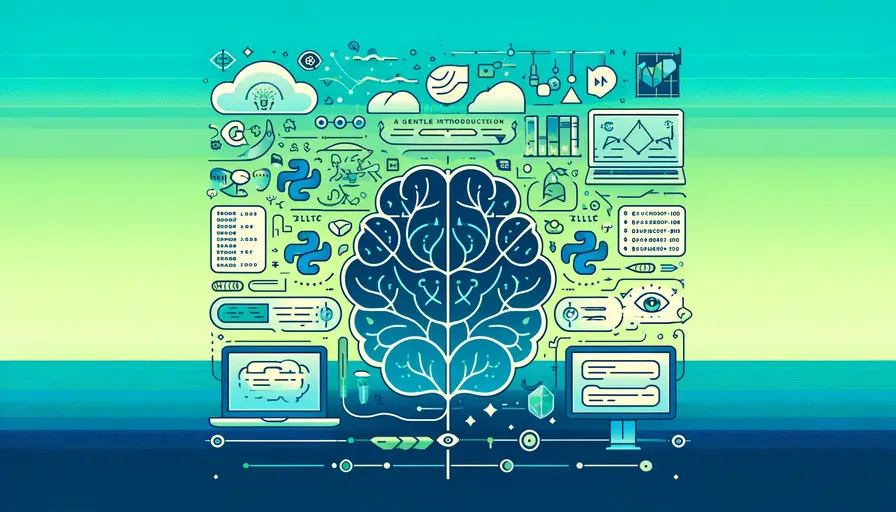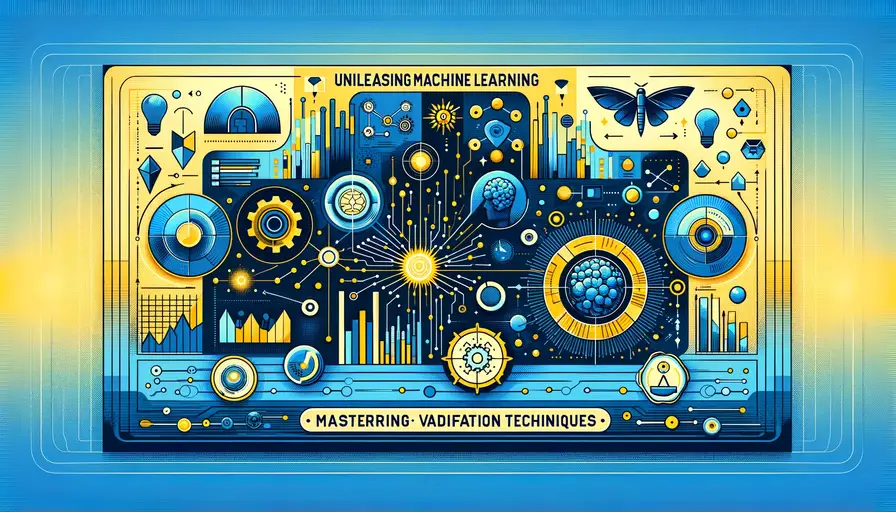
Comprehensive Guide to Machine Learning Pipelines

Machine learning pipelines are essential for managing and automating the end-to-end machine learning workflow. They streamline the process from data collection and preprocessing to model training, evaluation, and deployment, ensuring reproducibility and efficiency. This guide explores the components of machine learning pipelines, best practices for implementation, and practical examples to help you build robust pipelines.
Components of Machine Learning Pipelines
Data Collection and Ingestion
Data collection is the first step in any machine learning pipeline. It involves gathering raw data from various sources such as databases, APIs, or web scraping. The quality and relevance of the collected data significantly impact the model's performance. Thus, it is crucial to ensure that the data is accurate, comprehensive, and representative of the problem you aim to solve.
Once collected, data ingestion processes the raw data into a format suitable for analysis. This may involve converting data types, handling missing values, and normalizing the data. Efficient data ingestion ensures that the subsequent stages of the pipeline run smoothly and without errors.
Here is an example of data collection and ingestion using Python and pandas:
 Machine Learning Algorithms for Map Generalization Classification
Machine Learning Algorithms for Map Generalization Classificationimport pandas as pd
# Data collection from a CSV file
data_url = 'https://example.com/data.csv'
raw_data = pd.read_csv(data_url)
# Data ingestion: handling missing values and normalizing
data = raw_data.dropna() # Remove rows with missing values
data['normalized_column'] = (data['column'] - data['column'].mean()) / data['column'].std() # Normalize a column
print(data.head())This code demonstrates how to collect data from a CSV file, handle missing values, and normalize a column, setting the stage for further preprocessing and analysis.
Data Preprocessing and Feature Engineering
Data preprocessing is a critical stage in machine learning pipelines, involving the cleaning and transforming of raw data into a format suitable for modeling. This step includes handling missing values, encoding categorical variables, scaling numerical features, and removing outliers. Effective preprocessing enhances the model's performance and ensures robust and accurate predictions.
Feature engineering, a subset of preprocessing, involves creating new features or modifying existing ones to improve the model's predictive power. This step requires domain knowledge and creativity, as it aims to extract meaningful patterns from the data that the model can leverage.
Here is an example of data preprocessing and feature engineering using scikit-learn:
 Combining Machine Learning Models
Combining Machine Learning Modelsfrom sklearn.preprocessing import StandardScaler, OneHotEncoder
from sklearn.compose import ColumnTransformer
from sklearn.pipeline import Pipeline
# Example dataset
data = pd.DataFrame({
'age': [25, 32, 47, 51],
'income': [50000, 54000, 85000, 120000],
'gender': ['male', 'female', 'female', 'male']
})
# Define preprocessing steps
numeric_features = ['age', 'income']
numeric_transformer = Pipeline(steps=[
('scaler', StandardScaler())
])
categorical_features = ['gender']
categorical_transformer = Pipeline(steps=[
('onehot', OneHotEncoder())
])
preprocessor = ColumnTransformer(
transformers=[
('num', numeric_transformer, numeric_features),
('cat', categorical_transformer, categorical_features)
])
# Apply preprocessing
preprocessed_data = preprocessor.fit_transform(data)
print(preprocessed_data)This code shows how to preprocess numeric and categorical features using scikit-learn's Pipeline and ColumnTransformer, standardizing numerical columns and one-hot encoding categorical columns.
Model Training and Evaluation
Model training involves selecting an appropriate algorithm and feeding the preprocessed data into it to learn patterns and make predictions. The choice of algorithm depends on the nature of the problem (classification, regression, clustering, etc.) and the characteristics of the data. During training, the model parameters are adjusted to minimize the error between predicted and actual values.
Evaluation is the process of assessing the model's performance using metrics such as accuracy, precision, recall, F1-score, and mean squared error. This step involves splitting the data into training and testing sets, training the model on the training set, and evaluating its performance on the testing set. Cross-validation techniques can also be used to ensure that the model generalizes well to unseen data.
Here is an example of model training and evaluation using scikit-learn:
 The Impact of Data Normalization on Machine Learning Models
The Impact of Data Normalization on Machine Learning Modelsfrom sklearn.model_selection import train_test_split
from sklearn.ensemble import RandomForestClassifier
from sklearn.metrics import accuracy_score
# Example dataset
data = pd.DataFrame({
'age': [25, 32, 47, 51],
'income': [50000, 54000, 85000, 120000],
'gender': ['male', 'female', 'female', 'male'],
'purchased': [0, 1, 1, 0]
})
# Preprocess data (as shown earlier)
preprocessed_data = preprocessor.fit_transform(data.drop(columns=['purchased']))
labels = data['purchased']
# Split data into training and testing sets
X_train, X_test, y_train, y_test = train_test_split(preprocessed_data, labels, test_size=0.3, random_state=42)
# Train the model
model = RandomForestClassifier(random_state=42)
model.fit(X_train, y_train)
# Evaluate the model
y_pred = model.predict(X_test)
accuracy = accuracy_score(y_test, y_pred)
print(f"Accuracy: {accuracy}")This code demonstrates how to train a Random Forest classifier on the preprocessed data and evaluate its accuracy, highlighting the model's performance on the testing set.
Best Practices for Implementing Machine Learning Pipelines
Modular and Reusable Code
Writing modular and reusable code is a best practice in building machine learning pipelines. This involves breaking down the pipeline into smaller, independent components that can be easily maintained, tested, and reused. Each component should have a single responsibility, making it easier to debug and update.
Modular code enhances collaboration among team members, as different parts of the pipeline can be developed and tested independently. It also facilitates scaling, as components can be reused across different projects with minimal modifications. Using libraries like scikit-learn's Pipeline and ColumnTransformer helps in creating modular pipelines.
Here is an example of a modular pipeline using scikit-learn:
 Data Pipeline vs Machine Learning Pipeline
Data Pipeline vs Machine Learning Pipelinefrom sklearn.pipeline import Pipeline
# Define preprocessing steps
preprocessor = ColumnTransformer(
transformers=[
('num', numeric_transformer, numeric_features),
('cat', categorical_transformer, categorical_features)
])
# Define the model
model = RandomForestClassifier(random_state=42)
# Create a complete pipeline
pipeline = Pipeline(steps=[
('preprocessor', preprocessor),
('classifier', model)
])
# Train the pipeline
pipeline.fit(X_train, y_train)
# Evaluate the pipeline
y_pred = pipeline.predict(X_test)
accuracy = accuracy_score(y_test, y_pred)
print(f"Pipeline Accuracy: {accuracy}")This code demonstrates how to create a modular pipeline that includes both preprocessing and model training steps, enhancing code reusability and maintainability.
Automation and Orchestration
Automation and orchestration are key to managing complex machine learning pipelines. Automation involves using tools and scripts to execute various stages of the pipeline without manual intervention. Orchestration coordinates these automated tasks, ensuring they run in the correct order and handle dependencies.
Tools like Airflow, Kubeflow, and Prefect provide robust solutions for automating and orchestrating machine learning pipelines. These tools offer features like scheduling, monitoring, and error handling, ensuring that pipelines run smoothly and efficiently.
Here is an example of using Airflow to orchestrate a simple machine learning pipeline:
 Clustering in Data Analysis: Key Considerations and Best Practices
Clustering in Data Analysis: Key Considerations and Best Practicesfrom airflow import DAG
from airflow.operators.python_operator import PythonOperator
from datetime import datetime
# Define tasks
def preprocess_data():
# Data preprocessing code
pass
def train_model():
# Model training code
pass
def evaluate_model():
# Model evaluation code
pass
# Define the DAG
dag = DAG('ml_pipeline', description='A simple ML pipeline',
schedule_interval='@daily', start_date=datetime(2021, 1, 1), catchup=False)
# Define tasks
preprocess_task = PythonOperator(task_id='preprocess_data', python_callable=preprocess_data, dag=dag)
train_task = PythonOperator(task_id='train_model', python_callable=train_model, dag=dag)
evaluate_task = PythonOperator(task_id='evaluate_model', python_callable=evaluate_model, dag=dag)
# Set task dependencies
preprocess_task >> train_task >> evaluate_taskThis code defines an Airflow DAG to orchestrate a machine learning pipeline with tasks for data preprocessing, model training, and evaluation, showcasing the power of orchestration tools.
Monitoring and Logging
Monitoring and logging are essential for tracking the performance and health of machine learning pipelines. Monitoring involves tracking key metrics such as model accuracy, training time, and resource usage. Logging captures detailed information about the pipeline's execution, including errors and warnings, which is crucial for debugging and auditing.
Tools like Prometheus, Grafana, and ELK Stack (Elasticsearch, Logstash, Kibana) provide comprehensive solutions for monitoring and logging. They offer real-time insights and visualization capabilities, enabling proactive management of machine learning pipelines.
Here is an example of setting up basic logging in Python:
 Mastering the Zero-Inflated Model: A Machine Learning Must-Have
Mastering the Zero-Inflated Model: A Machine Learning Must-Haveimport logging
# Configure logging
logging.basicConfig(level=logging.INFO, format='%(asctime)s - %(levelname)s - %(message)s')
# Example function with logging
def preprocess_data():
logging.info('Starting data preprocessing...')
# Data preprocessing code
logging.info('Data preprocessing completed.')
# Call the function
preprocess_data()This code sets up logging for a data preprocessing function, capturing detailed information about its execution and any issues that may arise.
Practical Examples of Machine Learning Pipelines
Image Classification Pipeline
An image classification pipeline involves several stages, including data collection, preprocessing, augmentation, model training, and evaluation. This pipeline processes raw images to train a model that can classify images into predefined categories.
Here is an example of an image classification pipeline using TensorFlow and Keras:
import tensorflow as tf
from tensorflow.keras.preprocessing.image import ImageDataGenerator
from tensorflow.keras.applications import VGG16
from tensorflow.keras import layers, models
# Data collection and preprocessing
datagen = ImageDataGenerator(rescale=1./255, validation_split=0.2)
train_generator = datagen.flow_from_directory('path/to/data', target_size=(150, 150), batch_size=32, subset='training')
validation_generator = datagen.flow_from_directory('path/to/data', target_size=(150, 150), batch_size=32, subset='validation')
# Model definition
base_model = VGG16(weights='imagenet', include_top=False, input_shape=(150, 150, 3))
model = models.Sequential([
base_model,
layers.Flatten(),
layers.Dense(256, activation='relu'),
layers.Dense(1, activation='sigmoid')
])
# Compile the model
model.compile(optimizer='adam', loss='binary_crossentropy', metrics=['accuracy'])
# Train the model
history = model.fit(train_generator, epochs=10, validation_data=validation_generator)
# Evaluate the model
loss, accuracy = model.evaluate(validation_generator)
print(f'Validation Accuracy: {accuracy}')This code demonstrates an image classification pipeline that uses a pre-trained VGG16 model, showcasing the process from data preprocessing to model training and evaluation.
Natural Language Processing Pipeline
A natural language processing (NLP) pipeline involves stages such as text preprocessing, feature extraction, model training, and evaluation. This pipeline processes raw text data to train a model that can perform tasks like sentiment analysis or text classification.
Here is an example of an NLP pipeline using scikit-learn:
from sklearn.feature_extraction.text import TfidfVectorizer
from sklearn.model_selection import train_test_split
from sklearn.linear_model import LogisticRegression
from sklearn.metrics import accuracy_score
# Example dataset
texts = ["I love this product!", "This is the worst experience ever.", "I'm very happy with the service.", "I'm so disappointed."]
labels = [1, 0, 1, 0] # 1 = Positive, 0 = Negative
# Text preprocessing and feature extraction
vectorizer = TfidfVectorizer()
X = vectorizer.fit_transform(texts)
# Split data into training and testing sets
X_train, X_test, y_train, y_test = train_test_split(X, labels, test_size=0.3, random_state=42)
# Train the model
model = LogisticRegression()
model.fit(X_train, y_train)
# Evaluate the model
y_pred = model.predict(X_test)
accuracy = accuracy_score(y_test, y_pred)
print(f"Accuracy: {accuracy}")This code demonstrates an NLP pipeline for sentiment analysis, highlighting the steps from text preprocessing to model training and evaluation.
Time Series Forecasting Pipeline
A time series forecasting pipeline involves stages such as data collection, preprocessing, feature engineering, model training, and evaluation. This pipeline processes time series data to train a model that can predict future values based on historical patterns.
Here is an example of a time series forecasting pipeline using prophet:
from fbprophet import Prophet
import pandas as pd
# Load dataset
url = 'https://raw.githubusercontent.com/jbrownlee/Datasets/master/airline-passengers.csv'
data = pd.read_csv(url, parse_dates=['Month'])
data.rename(columns={'Month': 'ds', 'Passengers': 'y'}, inplace=True)
# Create and train the model
model = Prophet()
model.fit(data)
# Make future predictions
future = model.make_future_dataframe(periods=12, freq='M')
forecast = model.predict(future)
# Evaluate the model
model.plot(forecast)
model.plot_components(forecast)This code demonstrates a time series forecasting pipeline using the Prophet library, showcasing the process from data preprocessing to model training and forecasting.
By understanding the components and best practices of machine learning pipelines and exploring practical examples, you can build robust and efficient pipelines that streamline the machine learning workflow and enhance model performance. Whether working on image classification, natural language processing, or time series forecasting, these principles and examples will help you develop effective machine learning solutions.
If you want to read more articles similar to Comprehensive Guide to Machine Learning Pipelines, you can visit the Algorithms category.






You Must Read